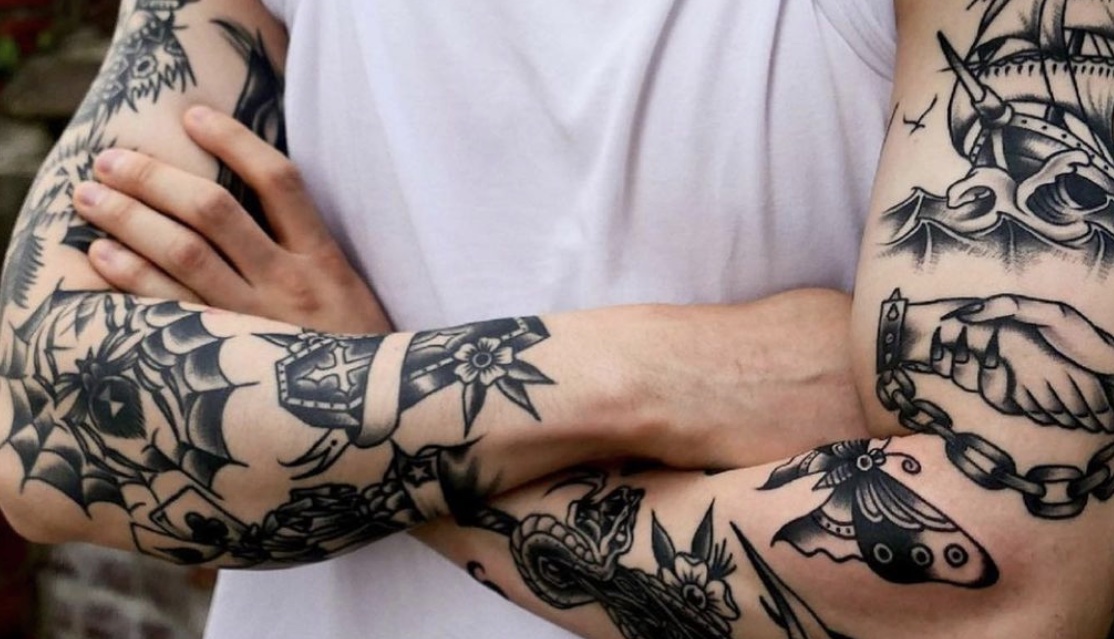
Bold black lines that etch out the image of an eagle in flight, a rose encrusted anchor, or clipper ship at sea…these are some classic images that may come to mind when one mentions Ink Fanatic Tattoos Traditional tattooing. Part art movement, part social phenomena, the United States succeeded in creating a style of tattooing that is all its own.
Truly an important facet of American arts and culture, we expound upon the history, designs and founding artists of this famed tattoo aesthetic. #rose #dagger #backpiece #blackandgrey #samuelebriganti #traditional #rose The History of Traditional Tattooing To start, Traditional tattooing has a foundation in many cultures, and many countries.
It’s true that sailors and soldiers were some of the first Americans to commit to tattoo-wearing. Part of the tradition of these service men getting tattoos was not only to carry symbols of protection and reminders of their loved ones, but to also mark the body with identification if their lives were lost in war. Their consistent travel to new lands (Japan, we’re looking at you!) guaranteed cross-cultural experience with new styles and ideas, thus directly influencing both flash and the iconography we have come to know and love today.
The electric tattoo machine, invented by Samuel O’Rielly, helped revolutionize the industry in 1891. Sam took Thomas Edison’s electric pen, and modified it to create the forerunner of the machines now used by the world over. By 1905, a man named Lew Alberts, known as Lew the Jew, was selling the first commercial tattoo flash sheets. With the invention of the tattooing machine and flash sheets, business had been growing for tattooists, and the demand for new designs and more ideas became imminent.
Soon this specific style of tattooing spread across borders and states, and as a result, we saw a unified aesthetic of Traditional Americana.Zampirri Style and Technique As for the actual visual style of Traditional tattooing, clean, bold black outlines and use of solid pigment all have rather rational uses.
Fundamental black outlines were a technique taken from tried-and-true methods of tribal tattooists belonging to both Polynesian and Native American peoples. For centuries, this carbon based ink has proven to age incredibly well, aiding the foundation and holding the shape of a design.
The array of colored pigments Traditional tattooists used were tied mainly to what was available when tattoo ink was not just at its highest quality or technological advancement yet. Often due to the lack of availability and demand, the only colors that were available were primary red, yellow and green – or ketchup, mustard, relish… as some old-schoolers would say.
Leave a comment